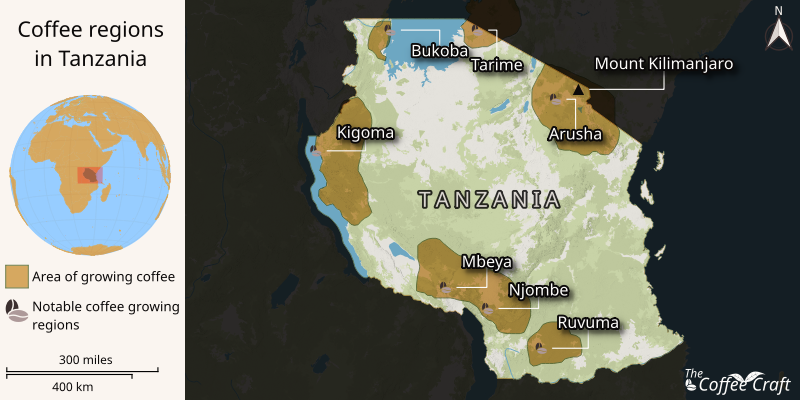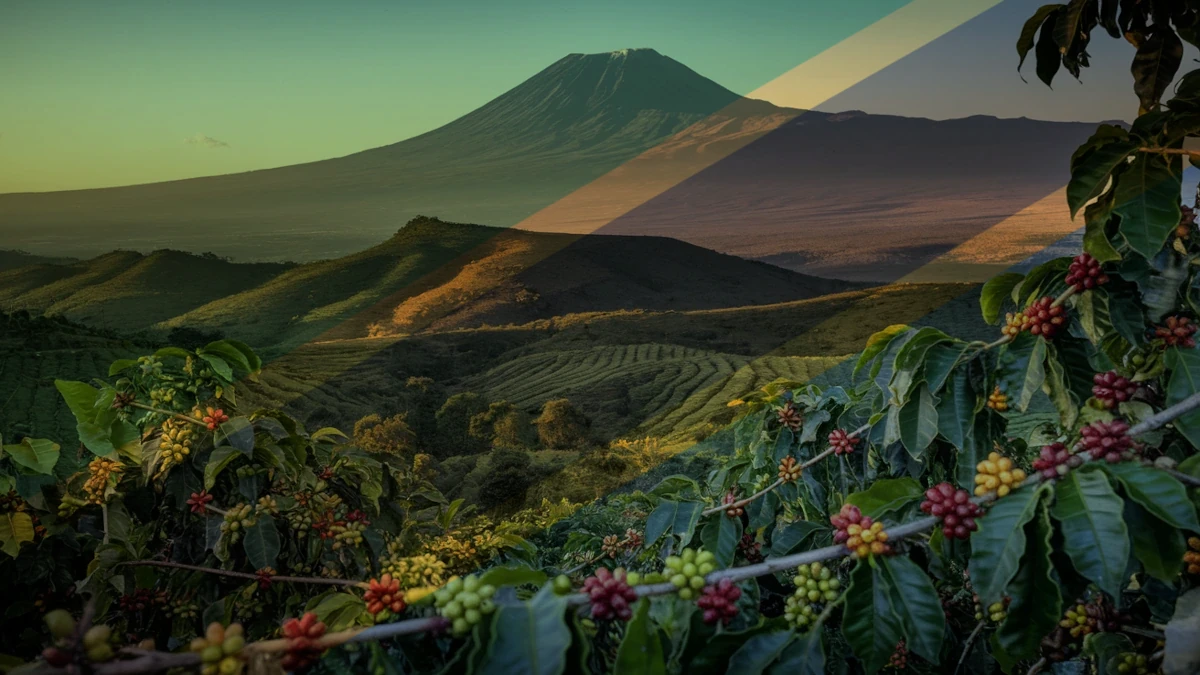What makes Tanzanian coffee stand out in the global coffee scene? From its volcanic soil origins to the rare and highly sought-after Peaberry beans, Tanzania’s coffee is a flavorful journey that excites coffee lovers worldwide. Whether you’re curious about the unique characteristics of Peaberry coffee or Tanzania’s rich coffee-growing heritage, this guide will explore the essence of Tanzanian coffee—its history, regions, challenges, and distinct flavor profiles.
Table of Contents
The Origins of Tanzanian Coffee
Tanzanian Coffee History
The story of Tanzanian coffee begins in the late 19th century when Catholic missionaries introduced Arabica plants to the region. However, coffee consumption predates colonial times, as the Haya people were known to boil and smoke coffee cherries.
During the colonial era, first under German and later British rule, coffee transitioned into a major export crop. The establishment of coffee plantations in regions like Bukoba solidified Tanzania’s position in the global coffee market.
Evolution of Coffee Cultivation
Colonial systems prioritized exports, but local cooperatives emerged in the mid-20th century to empower smallholder farmers. These cooperatives continue to play a vital role in supporting sustainable farming practices in Tanzania.
What Is Peaberry Coffee?
Defining Peaberry Coffee
Peaberry coffee is a natural mutation that occurs in about 5% of coffee cherries, producing a single rounded bean instead of the usual two halves. This unique structure results in beans that roast evenly and deliver concentrated flavors.
Why Tanzanian Peaberry Coffee Is Unique
Tanzanian Peaberry beans are prized for their vibrant acidity, fruity notes, and chocolate undertones. The meticulous sorting process ensures only the best Peaberry beans make it to market, offering coffee enthusiasts a distinct and unforgettable cup.
Peaberry Rarity and Value
Their rarity adds to their allure, making Tanzanian Peaberry coffee one of the most coveted varieties in the world. Its flavor intensity and consistency set it apart from regular beans.
Tanzanian Coffee Growing Regions
Kilimanjaro Region
Grown on the slopes of Mount Kilimanjaro, coffee from this region is characterized by its bright acidity and fruity flavors. The volcanic soil and high altitudes contribute to its complexity.
Mbeya Region
Nestled in the southern highlands, the Mbeya region is known for producing beans with rich chocolate flavors and a balanced body, thanks to its cooler climate and fertile soil.
Bukoba Region
A historical coffee hub, Bukoba produces high-acidity beans with pronounced fruity characteristics. Its cooperative farming system ensures consistent quality.
Arusha Region
Close to Kilimanjaro, Arusha’s coffee benefits from diverse microclimates. The result? Floral and citrus notes that appeal to fans of light, aromatic brews.
Southern Highlands (Ruvuma and Njombe)
Emerging regions like Ruvuma and Njombe offer bold, full-bodied flavors. The high altitudes slow cherry maturation, enhancing the beans’ complexity.

Challenges in Tanzanian Coffee Production
Production Challenges
Tanzanian coffee faces threats from climate change, coffee wilt disease, and limited access to modern farming equipment. These challenges lead to fluctuating yields and inconsistent quality.
Economic Impact
The reliance on smallholder farmers makes the industry vulnerable to global price fluctuations. However, direct trade systems have improved prices and sustainability.
Efforts to Overcome Challenges
Agricultural training programs and investments in modernized equipment are helping farmers adapt to changing conditions, ensuring a brighter future for Tanzanian coffee.
The Flavor Profile of Tanzanian Coffee
Complexity in Taste
Tanzanian coffee is celebrated for its bright acidity, berry-like sweetness, and juicy mouthfeel. Balanced with chocolate and spice undertones, each cup offers a multi-dimensional flavor experience.
Why Single-Origin Tanzanian Coffee Shines
The diversity of Tanzania’s growing regions contributes to its reputation for single-origin excellence. Each bean tells a story of the land, climate, and care behind its production.
Conclusion: Why Tanzanian Coffee Deserves a Place in Your Cup
From the rare Peaberry beans to the rich heritage of its growing regions, Tanzanian coffee offers an unparalleled experience for coffee enthusiasts. Its unique flavors, vibrant history, and diverse terroirs make it a standout choice for anyone seeking a truly exceptional cup of coffee.
Whether you’re savoring the berry-like sweetness of a Kilimanjaro brew or exploring the bold, full-bodied notes of the southern highlands, Tanzania’s coffee promises a sensory journey like no other.
